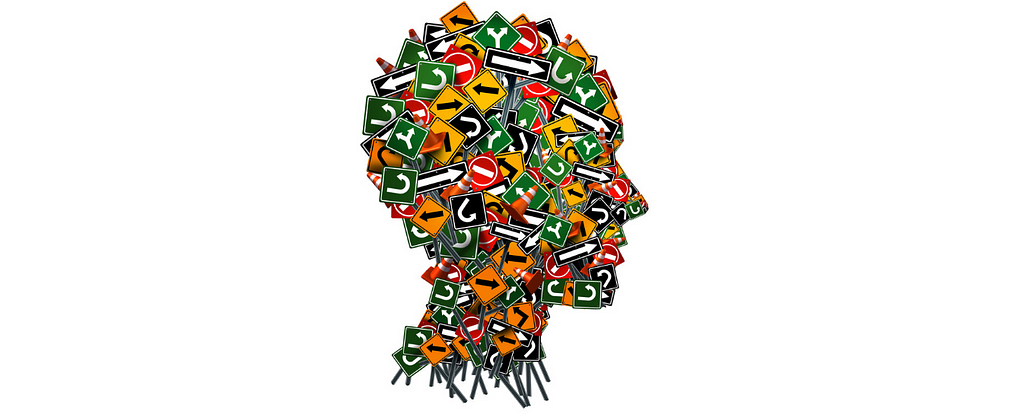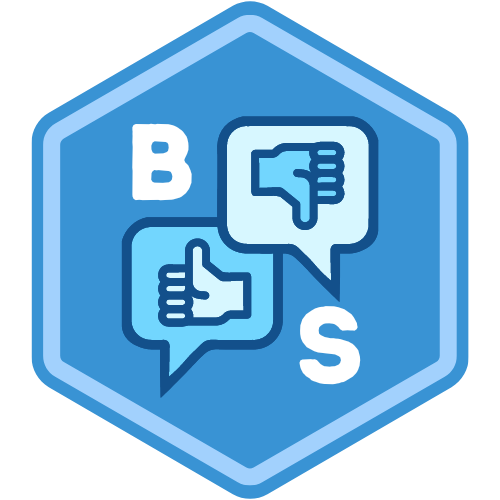“I would challenge you to a battle of wits, but I see you’re unarmed” — Christopher Hitchens
Put this disarming witticism to the test of “the Googles” and you will immediately see that it is, in fact, attributed to William Shakespeare. Notice however, that those who quote the Bard will invariably exclude both plays and sonnets from the attribution, leading the curious Internet spelunker to dig deeper in the hopes of touching bottom.
And so it is with any kind of misapprehension. Anything that can be simplified to the level of an aphorism is bound to be a gross generalization or an acrobatic reduction that leaves massive holes for misinterpretation. Take for instance the theory of quantum mechanics, fundamental to our tying together the working theories of physics that tightly describe the natural universe.

A pseudoscientific look at the idea of subatomic particles might lead one to infer direct influence over not only the ambient world but such ephemera as emotional states and more spiritual aspects of existence.
“Quantum healing moves away from external, high-technology methods toward the deepest core of the mind-body system. This core is where healing begins.”
A rapid test of such a claim would easily lead any of us to ask why the author wouldn’t simply quote the encyclopaedic description of Planck’s theory rather than to create a grotesque by-product without any foundation.

But get this: as we consider the source, we can feel our minds relaxing as we resolve the anxiety-inducing dissonance. The obvious answer is simply that such statements are created for an overarching purpose: profit. We feel at ease with that simply because it’s a straightforward answer. We get it, we see that the author’s job is to write for a certain audience, and who are we to question that. Someone benefits from the exercise and it isn’t us. We almost feel like outsiders, barging into a conversation between interlocutors on a train platform and remind ourselves that the only socially acceptable action is no action at all.
And we are happy to take a step back when we see that no one is getting seriously harmed. These are willing participants and if they choose to suspend their disbelief, that’s absolutely the nature of the game. The same goes for crafting rules that we call ‘belief systems’ for games that go with our times, or with our tribes. Regardless of time period, people have used the excess power of their prefrontal cortex to form social groups and play public games after giving them names like say, Olympics, Ramadan, homeopathy, chiropractic, capitalism, Easter, subscriptions, university or just about anything else we don’t really, fully think through. We sometimes allow ourselves to call this culture, inviting avid debaters into intellectual arguments about the meaning and impact of postmodernist thought, the impact of the media, and the influence of lightspeed communications on our perception of what is real. It’s an interesting topic, but for now, let’s preserve the kayfabe and stick with ideas that are based on information that is at least partially inaccurate.

These are games we play after structuring our beliefs to work backwards from a conclusion. The difference is that we play them in the real world, as opposed to a Monopoly board. The interesting thing is: the harder we believe, the less they seem like a game. And yet, the more we believe, the more we can tighten those social bonds and form relationships with true believers. People who support us and give us opportunities just because we’re playing the same game. We all want the game to continue, because switching games means adopting a whole new tribe, set of rules and belief system.
And for that to happen, we necessarily need to suspend some disbelief. A disbelief that, when suspended, artificially activates our confirmation biases. We look to accelerate belief in a new game by seeking our supporting information we willingly call evidence in the hope of just getting to play the game already! But while we embrace a new game, we need to keep a check on our own biases and be downright skeptical when we develop contempt for the scientific method.

This is all based on misinformation. It’s not ignorance, it is willing suspension of disbelief. It is personal participation with consent.
Where it all goes funny is where some of the players see that their personal benefit may be capped, or at least reaches the point of diminishing returns unless they tilt the tables in their favour. The gain of advantage through authority is precisely the point where it all starts to go wrong. It’s the point where cheating at the game takes a dark turn and we can start to see harms in the imposition of wills.
And so we go from the democratic personal choice of taking part in a harmless distraction designed for people to form bonds, to the ominous claims to authority at the dodgy foundations of power structures. This is where definite statements and certainties appear on the scene, telling equal humans they are unequal, informing participants that they are being watched and judged, claiming that the laws of physics can arbitrarily bend and even pretending to empower participants with the capacity to will themselves to stratospheric achievement well beyond the limits of the game.

This is where it all goes a little wrong, because we see harms strewn across a spectrum of severity, from mere financial impact to loss of life, to the abuses and trauma suffered by vulnerable sectors, to the chilling effects of bans on progress across generations.
Through this simple lens — which is itself an abstraction that you can consider to be a brief game we are both playing for the purpose of this article — we can see that the harms to children and the existential effects on our species are entirely different, and yet have the same source: a motivated entity seeking to impose their will upon others by pushing ideas that replace other ideas.
That is the foundation of disinformation. It is the replacement of something that works, something that is accepted, fundamental but not always intuitive; with a notion that a particular ideal is achievable, or a scary conclusion can be avoided if only we were willing to open our minds to a different way of thinking.

Disinformation stems from our willingness as humans to always be open to a different way of thinking with the reasonable caveat — imposed by 4 billion years of survival — that the solution make sense on paper. We can almost hear our brains say, as we listen to radio ads or browse the isles of a store “just give me something that makes sense and I will make a case for buying it”. All too often what we think we need is a narrative that is even superficially consistent.
What does that mean? Well, this is where we need to again step on the shoulders of giants and invoke the Socratic dictum about the unexamined life. We need to remain students of life, if only because life is all there is for us. We need to be aware of the games we agree to play, so as not to be taken in by games we really don’t want to play. We all need to form constructs that don’t just protect us, but those in our tribes as well. And if someone in our tribe tries to point out inaccuracies, the answer is not to marginalize and ostracize them, but to compare evidence to see where the dogma is.

This is in and of itself a game, but one that is absolutely rewarding and necessary for a healthy society. Do we need to buy into the abusive elements of traditions to enjoy them? Do we need to eliminate the pleasant aspects of culture because they carry historic baggage? Or do we need to share the information so that we can all do better in the future? We have created art, science, beauty and the fruits of progress by sharing good information and fixing misinformation where we see it.
But disinformation is something altogether different. It is concocted by people who understand the game and what makes people buy. Their game similarly begins with the end in mind, which is why they appear to be a few steps ahead. They are not. They simply forged evidence and forced the argument to get someone, anyone, to nod publicly. That public acquiescence, much like looking up in a public place, is irresistibly infectious for humans for the same reason for which we are here and others are not: survival.
So fear plays a big part in the spread of disinformation. Confusion is the disruptor, doubt is the agent of change that replaces accepted belief with coercive myth. The key thing to keep in mind is that misinformation is either a granule of untruth that brains will gladly replace with fact given convincing evidence, or the self-imposed belief that serves a personal purpose, such as psyching ourselves up to play a mean game of chess.

Disinformation is neither the bizarro evolutionary conclusion nor any kind of distant relative of misinformation. It is a lie designed to force an imbalance of power and it cares not one iota for the harms caused along the way. And yes, it is here to stay.
200 years into the future, a timeline of humanity will see our part of the information age as 20 initial years of academic activity, 20 additional years of information sharing, 20 years of commercial innovation, all progressively infused with increasing efforts to influence the masses, right up until our communication systems are saturated to capacity with disinformation.

I have resisted the urge to discuss dystopian outcomes, artificial intelligence and sinister conspiracies because in the absence of evidence, we simply need to shun the instinct of assuming collusion between those unscrupulous parties that seek to gain and maximize power. In fact, we gain power by teasing them apart and recognizing that they not only lurk in the shadows, but in the minority. These crepuscular entities are naturally collaborative as long as they can find symbiotic gain, but as humans, we already have too many cognitive biases to deal with on a continuous basis.
How then, do we exercise our clear thinking to separate a mere fallacy from a lie? For one, consider the source. There is a palpable difference between someone who is mistaken or misled — even if they are militant and in the clear throes of struggling with bad case of confirmation bias— and an entity, visible or not, leading the charge to disinform or deceive. A mistake is often nothing more than an embarrassing oopsie, but a lie is a shameless attempt at influence whose high probability of harm should make it intolerable to all but the most apathetic members of society.

There is such a thing as misinformation, but as soon as it carries a risk of harm, sharing it becomes disinformation. Lest we be tempted to say that misinformation can be ignored, while disinformation simply cannot, the latter is weaponized to such a degree that one can almost feel it vibrating with the anticipation of benefitting from the amplified exposure afforded by efforts to openly debunk it. In light of the herculean efforts needed to often sort it out, we could be forgiven for simply ignoring blatant corruption and contrived messaging in the simple — and likely naïve — hope that what is obvious to us is also clear to everyone else.
Fortunately, we have a few effective — yet tragically underutilized — tools at our disposal that can effectively reduce our exposure. From safe adblockers (because many are simply spyware) to philosophical razors (think of Occam’s Razor) to media studies (to understand how to resist the normalization of influence operations), to simply cutting the cord; let’s teach our communities to make incremental progress in reducing their attack surfaces (i.e. the number of ways they can be reached by disinformation campaigns) and become attuned to things that just sound a little off, from sponsored content to full blown political propaganda. The alternative is a slippery slope. As Carl Sagan wisely pointed out:
“One of the saddest lessons of history is this: If we’ve been bamboozled long enough, we tend to reject any evidence of the bamboozle. We’re no longer interested in finding out the truth. Once you give a charlatan power over you, you almost never get it back.”
Finally, let’s all practice more empathy, literacy and charity, because the coming wave of disinformation will be unlike anything that our genome could prepare us for. No one can predict all the harms that will arise from the abuses of both trust and technology we are about to witness, so let’s teach kids to exercise kindness, to think on their feet, but also to be less tolerant towards disinformation, for everyone’s sake.


